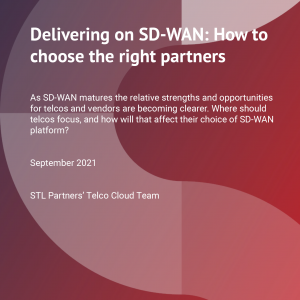Private and vertical cellular networks: Threats and opportunities
£1,000.00 excl VAT
Mobile operators are not the only companies that can deploy 4/5G cellular networks. The rise of IoT and 5G is driving huge new interest in running mobile infrastructure, presenting new opportunities as well as threats for telcos.
Note: that the Excel dataset is not included with this product. To purchase access to this dataset get in touch at contact@stlpartners.com
Description
Format: PDF filePages: 42 pagesCharts: 16Author: Dean BubleyPublication Date: August 2019
Table of Contents
- Executive Summary
- Introduction
- Public vs. non-public networks
- Private network vs. private MVNO vs. slices
- Motivations & use-cases for private networks
- Business drivers for private cellular
- Technical use-cases for private cellular
- Industrial sites & IIoT
- Enterprise/public in-building coverage
- Neutral host networks (NHN)
- Fixed 4G / 5G networks
- Regulatory & spectrum issues
- Other regulatory considerations
- Building private networks – technology
- Architectural choices, technology standards & industry bodies
- The emerging private networks value chain
- Conclusions & Recommendations
- How large is the private network opportunity?
- Challenges and obstacles for private networks
- What is the implication for traditional telcos and MNOs?
- Telcos’ relationship to project scope
Table of Figures
- Figure 1: There are many different types of vertical / enterprise / private networks
- Figure 2: A selection of current Private LTE / 5G deployments
- Figure 3: Private cellular networks face numerous alternatives for enterprise wireless
- Figure 4: Main use-cases for vertical / enterprise / private / indoor networks
- Figure 5: 2-way radio replacement vs. industrial IoT as a drive for private networks
- Figure 6: Every industrial sector has unique requirements for wireless
- Figure 7: Neutral Hosts offer multi-network coverage in-building, or over wide areas
- Figure 8: Spectrum bands and initiatives suitable for Private LTE / 5G deployments
- Figure 9: The current mobile numbering scheme (defined by ITU’s E.212 IMSI standards) is problematic for creating 1000s of new private network identifiers
- Figure 10: Private cellular networks are almost as complex as MNOs’
- Figure 11: 3GPP Type-a private networks can integrate with public (PLMN) mobile
- Figure 12: Industrial network architectural options
- Figure 13: Today’s cellular industry value-chain is fairly straightforward & linear
- Figure 14: Mobile stakeholders will adopt more varied roles with private networks
- Figure 15: Private cellular networks can range from local to national coverage
- Figure 16: Many different types of vertical / enterprise / private networks
Technologies and industry terms referenced include: 5G, cellular, Coordination age, Disruption, mobile, MVNOs, Opportunities, private networks


